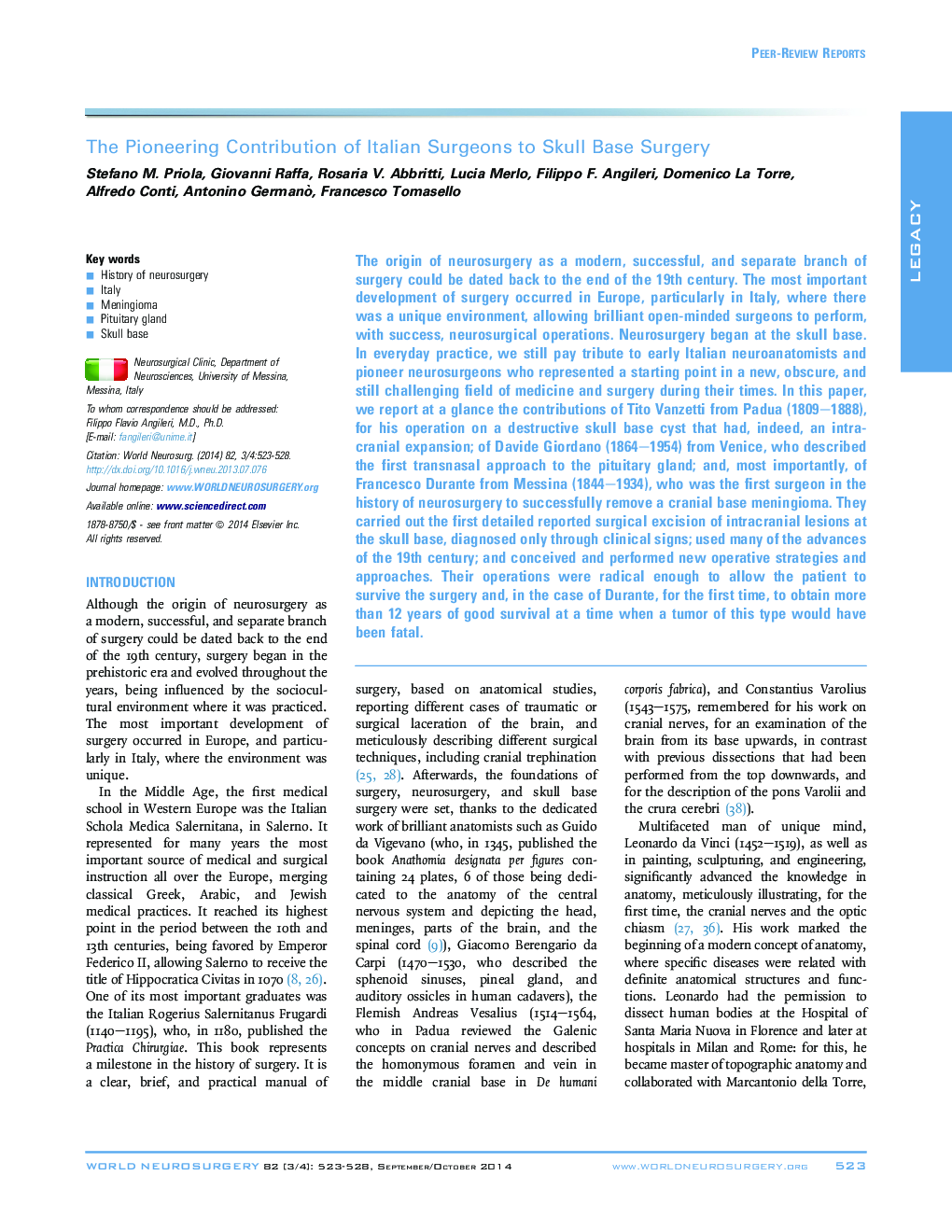| کد مقاله | کد نشریه | سال انتشار | مقاله انگلیسی | نسخه تمام متن |
|---|---|---|---|---|
| 3095461 | 1581471 | 2014 | 6 صفحه PDF | دانلود رایگان |
The origin of neurosurgery as a modern, successful, and separate branch of surgery could be dated back to the end of the 19th century. The most important development of surgery occurred in Europe, particularly in Italy, where there was a unique environment, allowing brilliant open-minded surgeons to perform, with success, neurosurgical operations. Neurosurgery began at the skull base. In everyday practice, we still pay tribute to early Italian neuroanatomists and pioneer neurosurgeons who represented a starting point in a new, obscure, and still challenging field of medicine and surgery during their times. In this paper, we report at a glance the contributions of Tito Vanzetti from Padua (1809–1888), for his operation on a destructive skull base cyst that had, indeed, an intracranial expansion; of Davide Giordano (1864–1954) from Venice, who described the first transnasal approach to the pituitary gland; and, most importantly, of Francesco Durante from Messina (1844–1934), who was the first surgeon in the history of neurosurgery to successfully remove a cranial base meningioma. They carried out the first detailed reported surgical excision of intracranial lesions at the skull base, diagnosed only through clinical signs; used many of the advances of the 19th century; and conceived and performed new operative strategies and approaches. Their operations were radical enough to allow the patient to survive the surgery and, in the case of Durante, for the first time, to obtain more than 12 years of good survival at a time when a tumor of this type would have been fatal.
Journal: World Neurosurgery - Volume 82, Issues 3–4, September–October 2014, Pages 523–528
